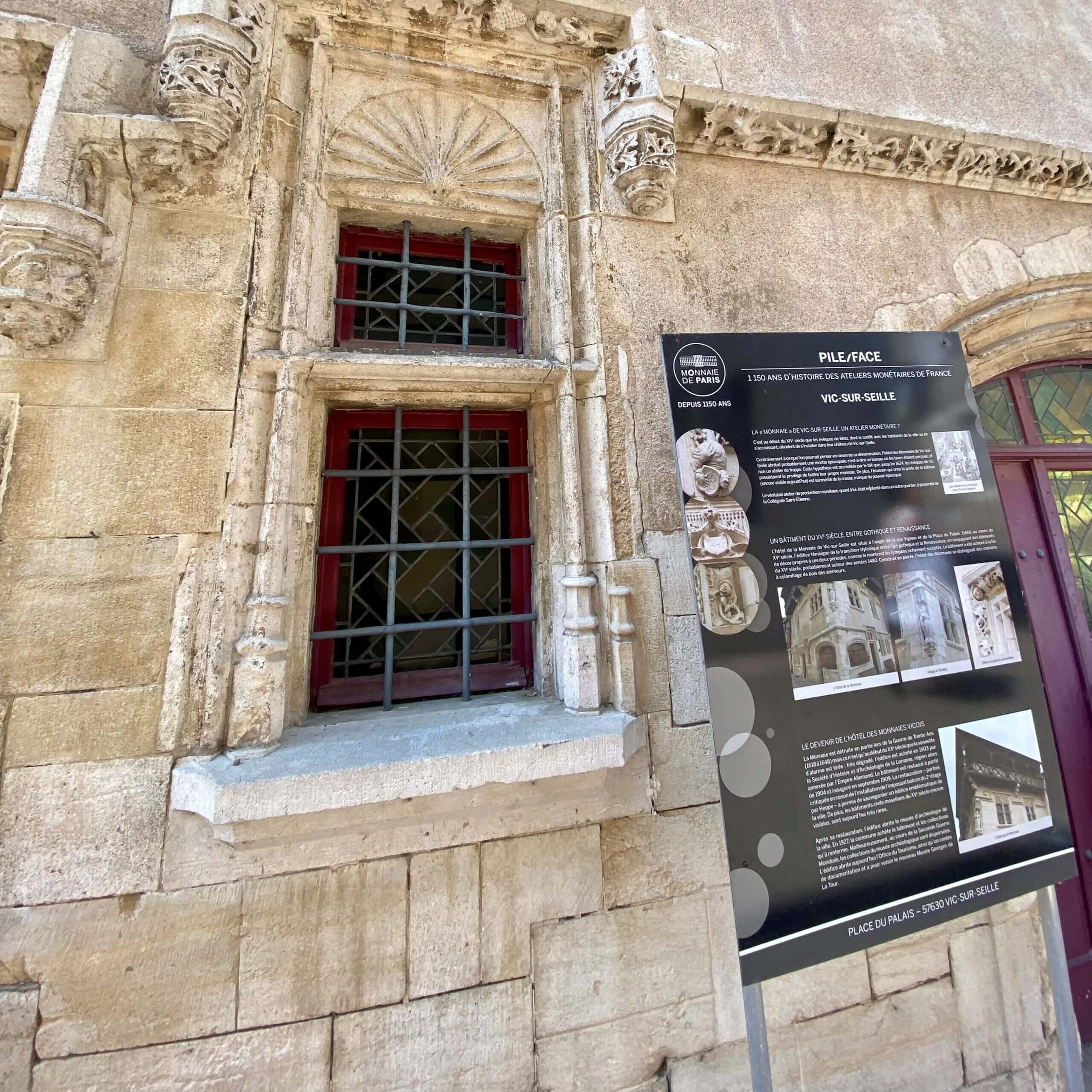Hotel de la Monnaie, Vic-sur-Seille
Seille, tributary of the Moselle at river kilometre 296 in Metz
Once an episcopal “mint”, built between 1456 and 1484. The money-changer Hoffelize is said to have lived in it. Where salt was mined, taxes were paid and trade was conducted. Anyone who traded had to change money. Salt has been mined in the valley of the Seille in the Saulnois since the Hallstatt period (750 to 450 BC). The Merovingians (5th-8th century) introduced salt works, which initially belonged to various abbeys, then to the bishopric of Metz and the Duchy of Lorraine. In the Merovingian period, salt was transported on the Seille to the “Port-Sailly” (salt port) of Metz. In the Middle Ages, salt was important as a preservative and in France because of the “Gabelle” (salt tax).
From 1286 onwards, every individual in France had to buy a minimum quantity of salt each week at a fixed price – a state monopoly that was only abolished in 1790.
The building shows Flamboyant Gothic with first hints of the Renaissance and is considered one of the best-preserved late Gothic private buildings in the country: late Gothic windows, gargoyles … and vine motifs, as a Christian symbol and probably because of the wine-growing in the region. (Source: Wikipedia)
